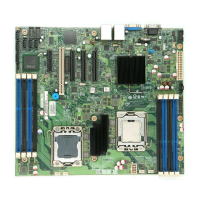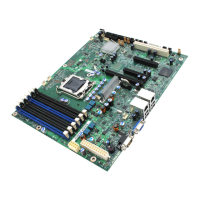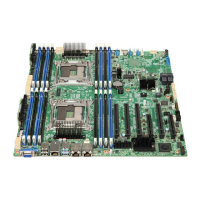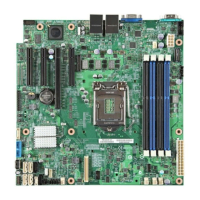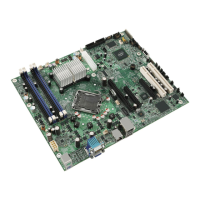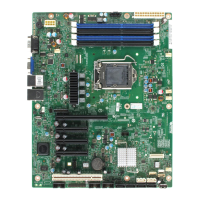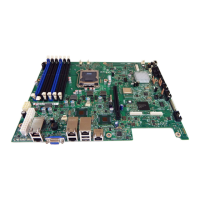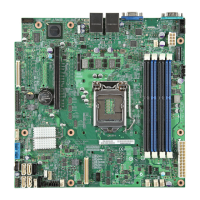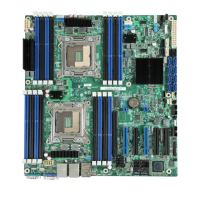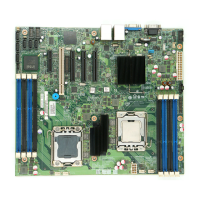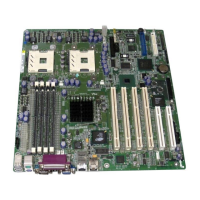Intel® 5000 Series Chipsets Server Board Family Datasheet System BIOS
Revision 1.1
Intel order number D38960-004
55
3.4.2 Fan Speed Control
System fan speed is controlled by the Baseboard Management Controller (BMC) functions of
the ESB-2 chip. During normal system operation, the BMC will retrieve information from BIOS
and monitor several platform thermal sensors to determine the required fan speeds.
In order to provide the proper fan speed control for a given system configuration, the BMC must
have the appropriate platform data programmed. Platform configuration data is programmed
using the FRUSDR Utility during the system integration process, and by System BIOS during
run time.
3.4.2.1 System Configuration Using the FRUSDR Utility
The Field Replaceable Unit & Sensor Data Record Update Utility (FRUSDR utility) is a program
used to write platform specific configuration data to NVRAM on the server board. It allows the
User to select which supported chassis (Intel or Non-Intel) and platform chassis configuration is
being used. Based on the input provided, the FRUSDR writes sensor data specific to the
configuration to NVRAM for the BMC controller to read each time the system is powered on.
3.4.2.2 Fan Speed Control from BMC and BIOS Inputs
Using the data programmed to NVRAM by the FRUSDR utility, the BMC is configured to monitor
and control the appropriate platform sensors and system fans each time the system is powered
on. After power-on, the BMC uses additional data provided to it by System BIOS to determine
how the system fans should be controlled.
The BIOS provides data to the BMC telling it which fan profile the platform is setup for,
Acoustics Mode or Performance Mode. The BIOS uses the parameters retrieved from the
thermal sensor data records (SDR), the fan profile setting from BIOS Setup, and the altitude
setting from BIOS Setup to configure the system for memory throttling and fan speed control. If
the BIOS fails to get the Thermal SDRs, then it will use the Memory Reference Code (MRC)
default settings for the memory throttling settings.
The <F2> BIOS Setup Utility provides options to set the fan profile or operating mode the
platform will operate under. Each operating mode has a predefined profile for which specific
platform targets are configured, which in turn determines how the system fans operate to meet
those targets. Platform profile targets are determined by which type of platform is selected when
running the FRUSDR utility and by BIOS settings configured using the <F2> BIOS Setup Utility.
3.4.2.3 Configuring the Fan Profile Using the BIOS Setup Utility
The BIOS uses options set in the <F2> BIOS Setup Utility to determine what fan profile the
system should operate under. These options include “SET FAN PROFILE” and “ALTITUDE”.
The “SET FAN PROFILE” option can be set to either the “Performance” mode (Default), or
“Acoustics” mode. See the following sections for detail describing the difference between each
mode. Changing the fan profile to Acoustics mode may affect system performance.
The “ALTITUDE” option is used to determine appropriate memory performance settings based
on the different cooling capability at different altitudes. At high altitude, memory performance
must be reduced to compensate for thinner air. Be advised, selecting an Altitude option to a
setting that does not meet the operating altitude of the server may limit the system fans ability to

